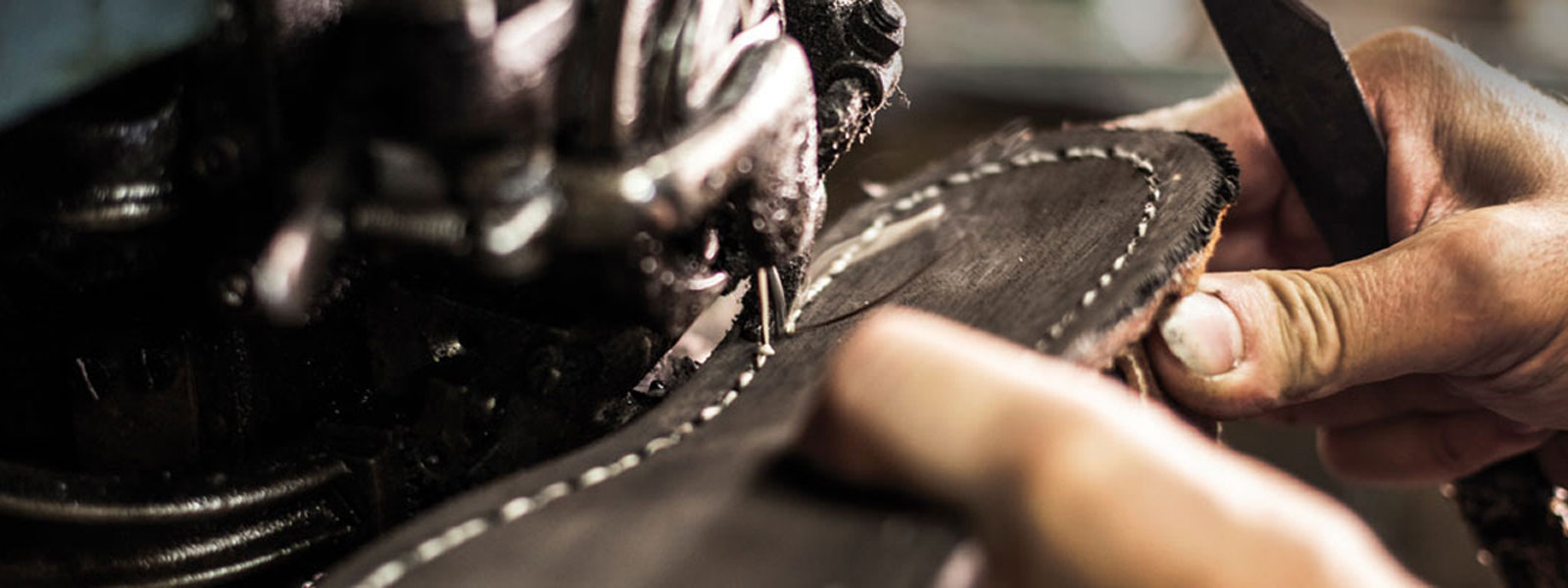manual cut
According to the type of shoe to be produced, the stylist prepares the hides and other materials that shall be used for all the necessary parts. The chosen hides/materials are placed on a plate on the workbench and the fibre board template is placed on top; the stylist uses a cutter around the edge of the template. Only experience and great manual dexterity make it possible for the stylist to use specific cutting techniques according to the type of material and its unique nature, consistence, fragility and value, reducing waste to a minimum.
preparation
MARKING: The position of the various pieces that make up the shoe
is marked on the upper. The marks are made manually in order to
preserve the hide.
SPLITTING: this process 'equalises' the thickness of the hide and is
carried out with the help of a specific machine. In this way it is also
possible to outline the entire upper, and to identify the position of the
gussets.
FLESHING: this process thins out the entire edge of the piece that
shall make up the upper, with a depth, angle and value of thinning
that may vary from area to area. This process makes it possible to add
other pieces to the upper without increasing the overall thickness of
the assembled product. In this case, too, all the processes are carried
out manually by the craftsman.
sewing
Once all the pieces of the upper are ready, the next step is to assemble them, by sewing. This process is carried out with the help of different sewing machines, according to the model to be created: post sewing machine, zig-zag sewing machine, etc..
hook application
In this case too, the process is carried out manually; the hook is fastened to the upper with both a rivet and a washer for enhanced tensile strength.
assembly
The upper (the upper part of the shoe) and the assembly insole (the structural part of the shoe) are assembled together by a thermoplastic anchoring (with several different techniques). The bottom (sole) is then glued in place with environmental-friendly polyurethane adhesives, thus 'finishing' the shoe, that acquires its final look and desired quality.
finishing
This process includes all the fine operations carried out on the finished shoe, after removing the template, to give it its final look and the desired aesthetic finish. It includes hand-milling the sole and heel, the insertion of the accessories (laces, arch supports, etc.) and a series of cleaning, perfecting, retouching and brushing operations, that end with the boxing of the shoes. The skill and training of the craftsman are essential.

